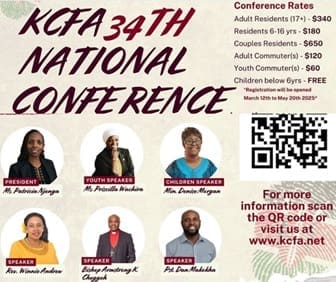
That , the government exists to create a conducive environment for commerce is one of the key functions of the State, without which an economy would crumble.
For John Kimani and Carol Wambua, the State’s intervention through the Nairobi City Council in the form of the modern kiosks concept has created a space where they comfortably earn their daily livelihood.
NTV’s Alex Mwangi looks at an example of a project that has turned out to be a success in fostering the growth of small and medium scale businesses in Kenya’s capital city, Nairobi.
More Related Stories
Nairobi has made significant strides in modernizing its kiosk culture, transforming informal trading spaces into organized, sustainable, and urban-friendly hubs that support small businesses and enhance public spaces.
Government-Led Modernization Initiatives
The Nairobi County Government has allocated KSh 1.2 billion to upgrade markets and construct modern kiosks across the city. The first phase, which began in 2021, focuses on 10 wards, including Pumwani, Dandora, and Kangemi, with KSh 25 million earmarked for new kiosks and additional funds for market renovations.
The Nairobi Metropolitan Services (NMS) has also initiated upgrades at major open-air markets such as Muthurwa, City Park, and Toi Market. These improvements include modern stalls, parking areas, new ablution blocks, and enhanced accessibility through link roads,
Integration of Sustainability and Community Engagement
The Nairobi City County Assembly has proposed integrating modern kiosks into public spaces with a focus on environmental sustainability. The plan includes installing dustbins, establishing weekly cleaning schedules, and involving kiosk operators in local greening initiatives, drawing inspiration from successful models in cities like Kigali.
The Rise of Food Kiosks and Cultural Impact
Food kiosks, locally known as “vibandas,” have become a staple in Nairobi’s urban culture. These small eateries serve affordable, home-style meals and foster community interaction. Despite their modest infrastructure, they play a crucial role in providing accessible nutrition and social spaces, particularly in working-class neighborhoods.
Challenges and Future Outlook
While the modernization efforts are commendable, challenges such as inconsistent implementation, limited resources, and the need for comprehensive planning persist. Ensuring that these developments are inclusive and effectively address the needs of informal traders and the broader community will be key to their long-term success.
In summary, Nairobi’s approach to kiosk modernization blends infrastructure development with community engagement and sustainability, aiming to create vibrant, inclusive urban spaces that support small businesses and enhance the city’s cultural fabric.







